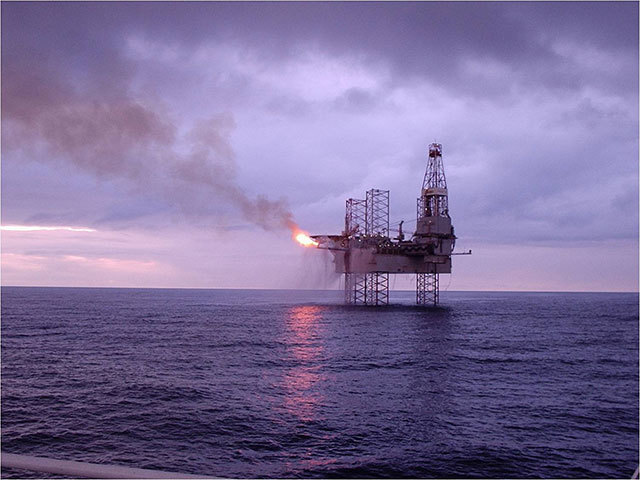
The majority of daily oil production in today’s market comes from mature or maturing oil fields. New discoveries of reserves are not matching the pace set by the growing global demand for energy. This emphasises the requirement for new technologies that can enhance recovery from both active fields and future discoveries.
The hydrocarbon resources found within carbonate reservoirs are in particular need of innovative new technologies to facilitate their economic exploitation. Carbonates are of critical importance to the oil and gas industry with more than 60% of the world’s oil, and 40% of gas reserves trapped in carbonates. Despite this, recovery factors using primary, secondary and tertiary methods from carbonates are significantly lower than that of sandstones.
Tertiary methods, or enhanced oil recovery (EOR) techniques have been contributing to daily oil production ever since waterflooding was accidentally discovered in Pithole, Pennsylvania in 1865, which in turn led to waterflooding or water injection becoming common practice in Pennsylvania in the 1880s.
More than 100 years later, the 1980s saw a particular focus on investment in EOR technologies as a consequence of the link between oil price and investment in EOR techniques. However, the majority of companies have tended to stick to the less costly, tried and tested water flooding technique as the initial method to enhancing oil production.
The high oil price over the last five years has resulted in both an increased interest in EOR research and development and a willingness to invest in a range of techniques and approaches. There is concern that this enthusiasm is diminishing due to the recent drop in the oil price, with companies sticking to water flooding.
The overall contribution from EOR has remained level over the years at around 3.5% of daily global production, and it is primarily used to target immobile oil that cannot be produced from primary and secondary methods. Commonly, an increase in production of between 30-60% of the reservoir’s original oil is expected, with the global average recovery rate from hydrocarbons stuck within the mid-30% range.
This emphasises the need for new technology capable of increasing recovery trends in oil production, particularly for carbonates. If the huge quantities of resources found within carbonates can be further exploited to the level that clastics are exploited by EOR techniques, it may go some way to alleviating a number of issues related to the global energy supply.
Particular interest in developing these new technologies is being shown by Middle East based companies, where carbonate fields dominate, and where around 70% of oil and 90% of gas reserves are held within carbonate reserves. If such technology is utilised then it should prove to be beneficial to global recovery rates. Alain Labastie, a former president of the Society of Petroleum Engineers, said that a 10% increase in the recovery factor could bring “about one trillion barrels of oil”.
Currently there are several different methods that are most commonly used in increasing and/or enhancing oil. These include; CO2 injection, steam injection, water flood injection, and hydraulic fracturing. As previously mentioned, successful deployment of these methods is somewhat limited to clastic rock types.
This presents an opportunity for the development of advanced secondary and EOR technologies that may mitigate the low recovery rates from carbonates, and enhance current recover rates from sandstones. Principally, the factors behind the low recovery rates from carbonates are: low water wetness, natural fractures, low permeability and inhomogeneous rock properties. Further research is necessary in order to improve understanding of these factors and their impact on various EOR techniques.
A drive towards low salinity injection, miscible and near-miscible gas injection, foam flooding and nanosurfactants enhancement technologies could prove to be the vital stepping stone in improving recovery from carbonates. In maturing basins worldwide, especially the North Sea, any such improvement in recovery rates may prove to be the perfect boost that the industry needs in order for the basins to become more economically viable and to ensure that future issues of supply and demand are more manageable and controlled.
It is estimated that a mere 1% increase in the global efficiency of hydrocarbon recovery could raise conventional oil reserves by up to 88 billion barrels, the equivalent of three years of annual production at today’s levels. This should be achievable and appropriate not just for reasons of energy security, but also because it is also right that every effort is made to maximise recovery rates.
Improved recovery from carbonate reservoirs was identified as a top challenge from ITF’s Subsurface Technology Roadmap. An ITF Workshop on EOR in Carbonates hosted by Kuwait Oil Company earlier this year offered a rare opportunity for a number of National Oil Companies in the Middle East to share valuable knowledge on the challenges facing EOR in carbonates and allowed qualified researchers to present and proffer possible solutions to the audience.
The output from this workshop was the identification of ideal project topics to launch as collaborated Joint Industry Projects, with up to 100% funding available for successful projects. This workshop will lead to ITF issuing a Call for Proposals this year to address identified technology challenges by encouraging developers and researchers to address the stated issue in their submissions.
Giuseppe Astarita is a Technology Analyst at ITF /Keith Mackie is ITF Operations Director on Enhanced Oil Recovery in Carbonates.
Recommended for you
